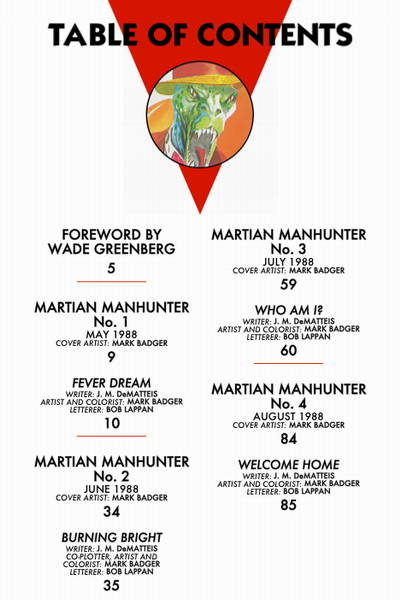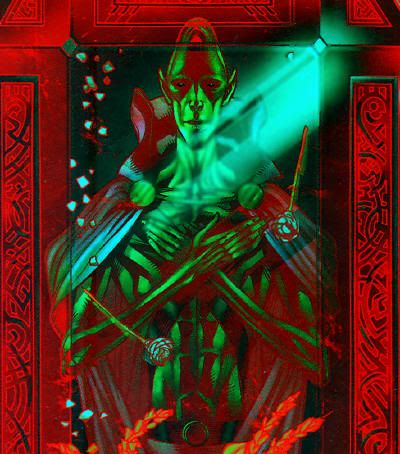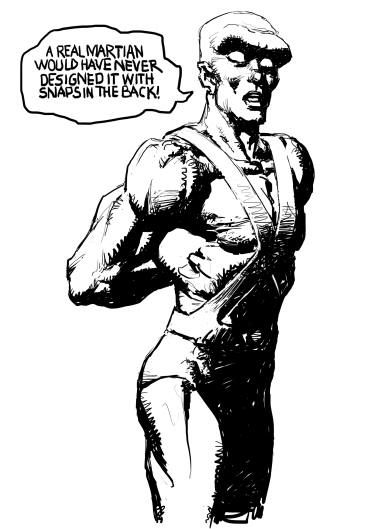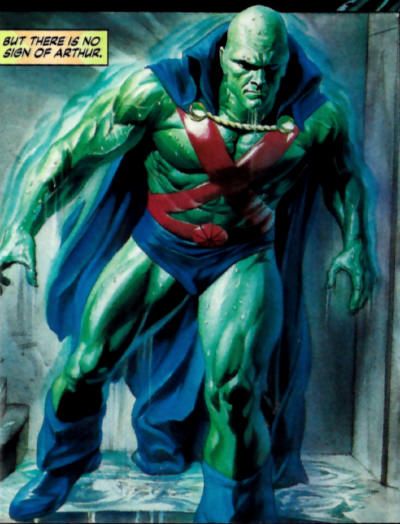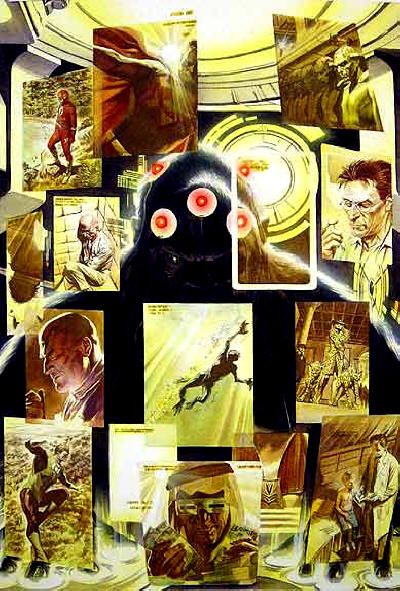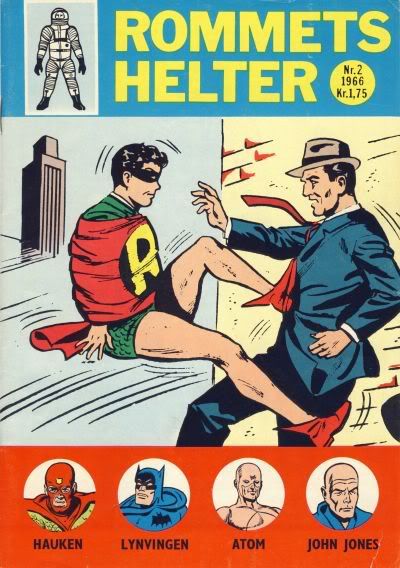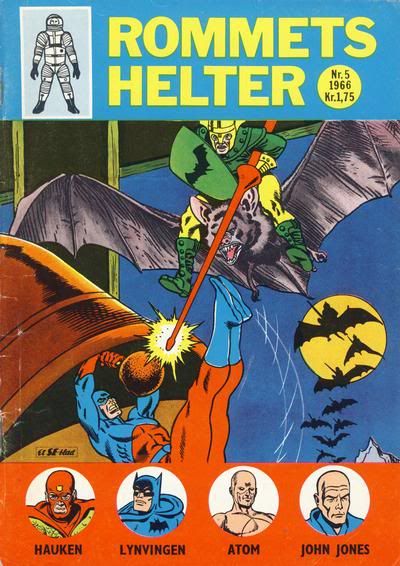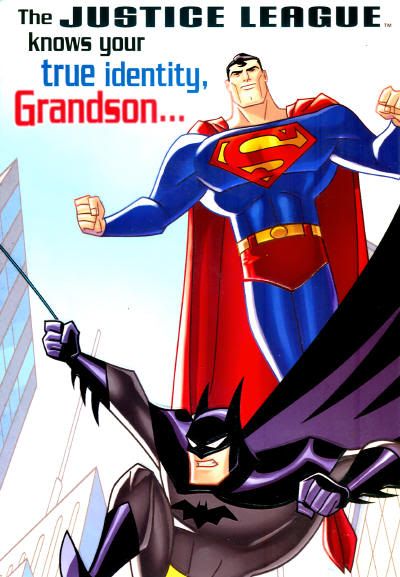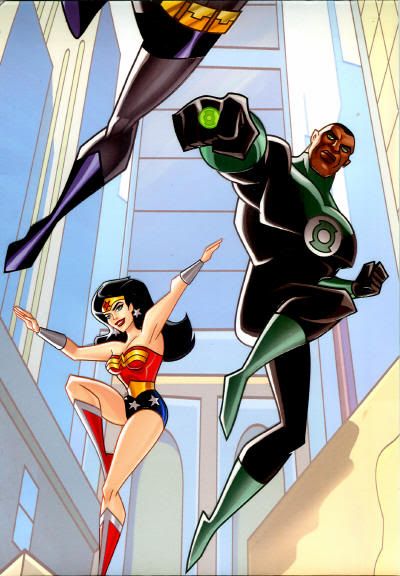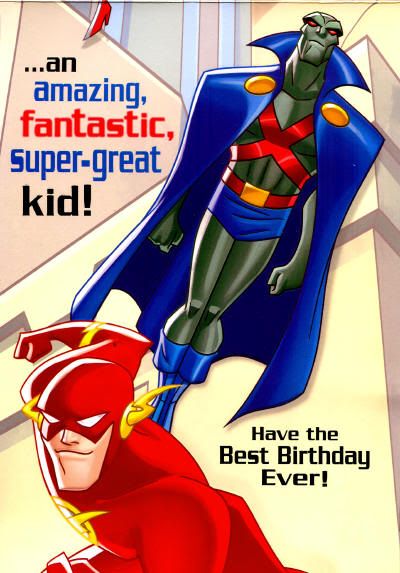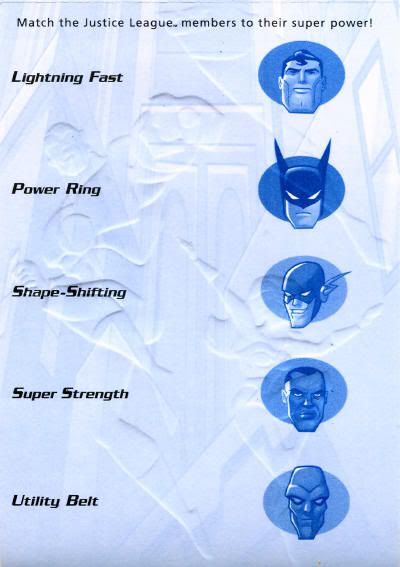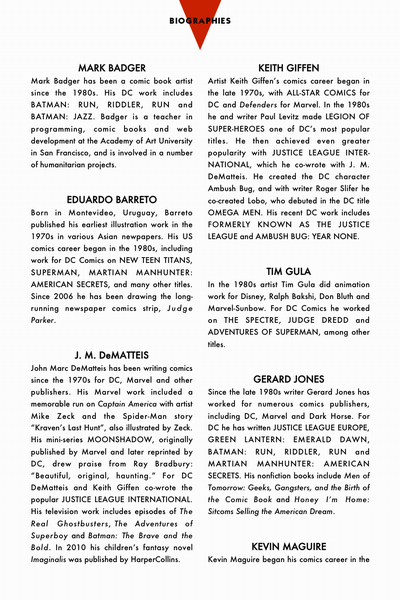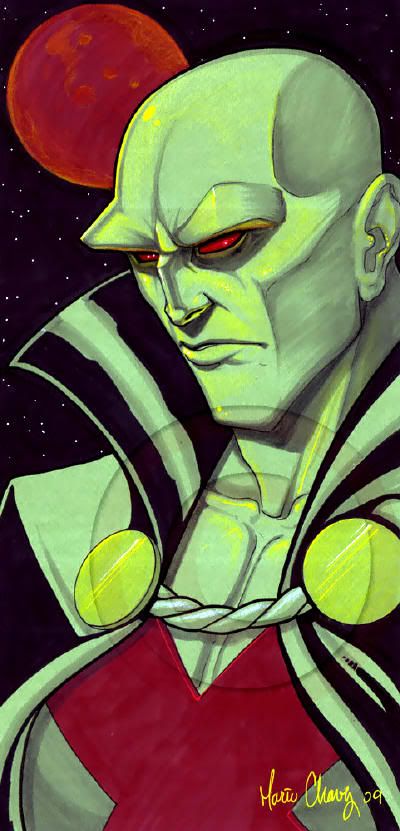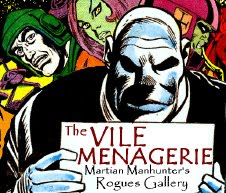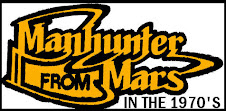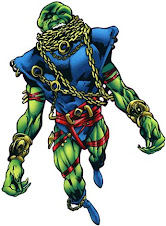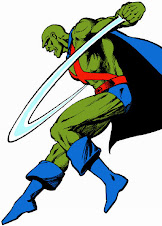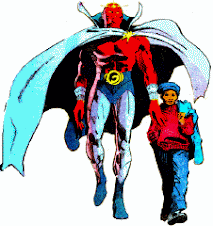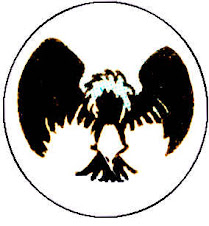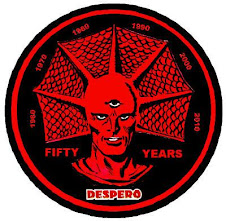 The Scale of Evil Category Criteria Rank
The Scale of Evil Category Criteria Rank
13)
Killers with inadequate, rage-filled personalities who "snapped." {Prior Definition}
Why The Human Flame has been selected for 6th Place:
- The Human Flame is conceptually and ideologically opposed to the Martian Manhunter.
J’Onn J’Onzz is a humble, introspective, benevolent immigrant perpetually in mourning for his beloved wife and daughter. Mike Miller is an entitled, obnoxious, malevolent native who ignores his ex-wife and child when not outright abusing them. J’Onn J’Onzz prefers to use his vast expanse of power sparingly, working through proper channels as part of a cooperative. Mike Miller rubs whatever abilities he has in the faces of any in his path, regardless of casualty or consequence, and will stab any back presented to him. J’Onn J’Onzz is among the most beloved and respected super-heroes in the world, even among super-villains. Mike Miller is loathed and dismissed by virtually everyone, good or bad, and hasn’t a friend on the face of the Earth. Even visually, Martian Manhunter’s smooth bare skin is contrasted against the Human Flame’s being nearly enveloped in his safety gear, only his furry Cro-Magnon mouth visible. They share alliterative, homogenic English names, but this only illustrates how one is a perversion of the other.
- The Human Flame was created to battle the Martian Manhunter.
In the old
Detective Comics stories, J’onn J’onzz’s existence wasn’t publically known, and few crooks went out of their way to confront police detective John Jones. Even after the Martian Manhunter went active with the Justice League, he mostly stumbled upon plots in motion independent of his influence. Mike Miller was just your average thug, but when he decided to build a crime suit to hit the big time, he specifically had Martian Manhunter in mind as an obstacle to overcome. Aware of rumors that the Alien Atlas was vulnerable to fire, he built in flame projectors and named himself after that ability, even though the suit’s primary weapon involved electricity. While lots of foes have been created for
Martian Manhunter books over the years, few if any owe their canonical existence to J’onn J’onzz himself.
- The Human Flame was the first super-villain to openly battle the Martian Manhunter.
Simply put, the existence of Martians on Earth, and the presence of a clandestine guardian among them, had just been revealed (not to mention their vulnerability to fire.) Now that Martian Manhunter was a proper super-hero, his first proper super-villain was the Human Flame.
- The Human Flame disproves the equation “fire=defeat.”
During
DC vs. Marvel, Martian Manhunter was placed against the Human Torch in an off-panel tussle. Even though at that point his flame vulnerability was purely psychosomatic and largely set aside, many assumed Johnny Storm to be the obvious victor. However, the Human Torch could never sustain a solo series, and cannot compete with the popularity of every other member of the Fantastic Four, so he is often the jobber of the team. Asbestos, water, the absence of oxygen—the Human Torch is always taking a powder. While the Human Flame is no Human Torch, his entire introductory story revolved around Martian Manhunter circumventing fire without Mike Miller even knowing what the Martian Marvel was up to. All of this is meant to show that while J’Onn J’Onzz is vulnerable to flames, it’s a challenge, not a silver bullet.
- The Human Flame is the first classic Martian Manhunter villain anyone bothered to remember.
J’onn J’onzz never had that great of a rogues gallery, but each decade has offered a decent selection of bad guys worth revisiting. However, I can’t recall a single one pre-dating the mid-80s to make a return appearance against the Alien Atlas, except Mike Miller.
- The Human Flame had his own mini-series..
While it’s more common today, super-villains who have enjoyed their own title are afforded a certain cache at DC Comics. Darkseid has never been more than an ensemble favorite, Gorillas Grodd has only been part of starring teams, and Vandal Savage headlined a four part arc in an anthology, but only Mike Miller got his own six issue mini-series.
- The Human Flame helped “kill” Martian Manhunter.
Effigy, a Green Lantern Kyler Rayner foe, and Dr. Light, a general DC villain specializing in the Teen Titans, actually captured and held the Martian Manhunter. Libra, a ‘70s Satellite era JLofA baddie who orchestrated the conspiracy to murder J’Onn J’Onzz, was the one who drove that flaming spear into his chest. Mike Miller, who had one super-heroic “archenemy,” was asked which one he wanted dead, and snapped cell phone pictures when his wish was granted. Regardless, the Human Flame was the Martian Manhunter villain present who targeted J’Onn, so he gets the undue credit.
- The Human Flame is the best known Martian Manhunter villain.
Thanks to his visibility in the
Final Crisis event, the Human Flame is more widely known than any other villain created specifically to battle the Alien Atlas. There are more famous foes of J’Onn J’Onzz, but they all originated in titles not starring Martian Manhunter, and are often more associated with other heroes or thought of as general DC Universe bad guys. No matter whom the Human Flame actually fights, and he’s had more run-ins with other heroes than he has had with Martian Manhunter, he’s still thought of as belonging to the Sleuth from Outer Space. When you ask the average comic reader to name a Martian Manhunter villain, unless they’re a diehard fan, the Human Flame will likely be one of the first names out of their mouth.
- The Human Flame is the model for the unworthy villain elevation.
In much the same way the Martian Manhunter is a patron saint to loser super-heroes, the Human Flame proves that any douchey, obscure, irrelevant nobody of a villain can come out of nowhere to get his own book and pivotal role in an event.
 The Counter Argument:
The Counter Argument:
- The Human Flame f’n blows. Seriously, he’s a waste of flesh, blood and hair.
- He makes our hero look bad by association, on account of the blowing.
- He has yet to develop a strong visual. The Human Flame suit is interchangeable with a dozen other arson-based crooks, his cybernetic upgrade was a ‘90s flashback, and the Inhuman Flame is the type of generic molten monster that was omnipresent in the Silver Age. When you’re defined by unfortunate facial hair, serious thought needs to go into your rehabilitation.
- He’s so derivative, he’s practically a mash-up. Inventor. Flame powers. Unmotivated hostility. Greedy. You could build the Human Flame out of random diced throws with a role-playing character generator.
- He’s the worst Silver Age Martian Manhunter super-villain. Tell me you wouldn’t rather read about Mr. Moth or the Human Squirrel.
What The Human Flame Represents:
Archetypal super-heroes like Captain Marvel and Superman are like George W. Bush—plain spoken, outwardly virtuous, and direct in action. That makes Dr. Sivana and Lex Luthor members of the liberal academic elite in their pursuit of abhorrent social change and detachment from the common man. Martian Manhunter flips this dynamic, as he’s a dark-skinned alien scientist/philosopher who achieves his goals not through force, though he has abundant access to such, but instead through diplomacy and almost inscrutably circuitous avenues.
The Human Flame then is a devoutly blue collar tea bagger high-fiving the guys at the NRA booth who drew a Hitler mustache on Barack Obama. Mike Miller built a crime suit to enable simple smash and grab tactics while warding off the local constabulary and super-hero with the seemingly foolproof means of fire and electrical projection. If Batman is the hero any of us could be with enough training and discipline, the Human Flame is the super-villain waiting for any of us in the garage after a trip through
Radio Shack and
Home Depot. The Human Flame started out as a regular enough Joe as far as crooks ago, but then this un-American super-creep came into power. It sent Mike Miller on a mission to take Martian Manhunter down through whatever sordid means or questionable alliance was required, and damn any who stand in his way as a cowardly traitor! This of course leaves Miller wide open to manipulation and demonization by forces far beyond his comprehension, but it also allows him access to power unattainable through the standard channels that keep him struggling. Besides, it isn’t murder if it’s a Martian, right?
The Human Flame is also a walking metacommentary criticizing J’Onn J’Onzz. Both characters debuted in
Detective Comics, never really broke through, disappeared for many years, and returned in a big way with the expectation that they would impress fans. Yet, Mike Miller is a rather shoddy, low rent adversary, casting a jaundiced light on the Martian Manhunter’s checkered history and dubious rogues gallery. If the Human Flame is the great white hope, what kind of sap must the Sleuth from Outer Space be?
There are, of course
other interpretations...
 Analogies:
Analogies:
- The Human Flame is to the Martian Manhunter as Flag Smasher is to Captain America.
So there’s this big bad that’s been built up for months as the kind of guy who can totally take out our hero. He’s like a negative image—a hostile nomad versus a patriot, a terrorist versus a defender, the spearhead of a dangerous organization versus a lone protagonist; mace against shield. Then the guy shows up, gets dropped like a punk, and never does anything of note again. Yet, when you bring up a list of the hero’s rogues, there the little turd is, all promise and no performance.
- The Human Flame is to the Martian Manhunter as Doctor Octopus is to Spider-Man.
Doc Ock was an early Spidey foe with powers tailored to match the hero, but he was also tubby in a hideously dumpy costume with a bowl haircut and thick glasses. The Human Flame wasn’t quite as portly in his first appearance, but the years were not kind to his waistline, and he also had an ugly suit with goggles and a moustache. In both cases, great effort has been expended in modern times to make these gadget/gimmick based villains cool, but no amount of trench coats and cybernetic implants can cover up the silly. Neither of these guys are Jerry O’Connell, the fat kid turned hottie, but are instead at best Corey Feldman, the shorter, dorkier Corey that loved Michael Jackson too much and Nicole Eggert too little.
- The Human Flame is to the Martian Manhunter as Javelin is to Green Lantern as Captain Boomerang is to the Flash.
Green Lantern has a power ring that can create energy constructs of virtually anything he can imagine. Javelin wears a yellow outfit, and throws yellow sticks that sometimes spray yellow paint, taking advantage of an impurity in the ring. The Flash can move at supersonic speed and create tornados by rotating his arms. Captain Boomerang can throw tricked out children’s toys accurately. In both cases, you’ve got woefully outgunned antagonists getting by on personality, outrageous luck, and dirty tricks.
Who isn't ranked because of The Human Flame:
- Fernus the Burning Martian: Fernus wasn’t about confronting J’Onn J’Onzz with his weakness, but about an evil Martian battling the JLA without any weakness, plus winnowing the number of White Martians lying around and giving Plastic Man a spotlight moment.
- The Pyre: The post child for villains made up specifically to fight the Martian Manhunter, the Pyre is something that burns, is fated to battle J’Onn J’Onzz in some future time, and has yet to make more than a cameo appearance over a decade after its creation.
- Lobo: Even in his earliest appearance, but especially during Run!, the Human Flame was a barely directed berserker causing nothing but misery in his foul-mouthed and generally offensive wake. Lobo plays off Martian Manhunter well, but not often enough to qualify.
In Closing:
The Human Flame is no one to crow about, but he’s relatively well known in modern comics circles and has impacted the course of J’Onn J’Onzz’s life in noteworthy fashion.
